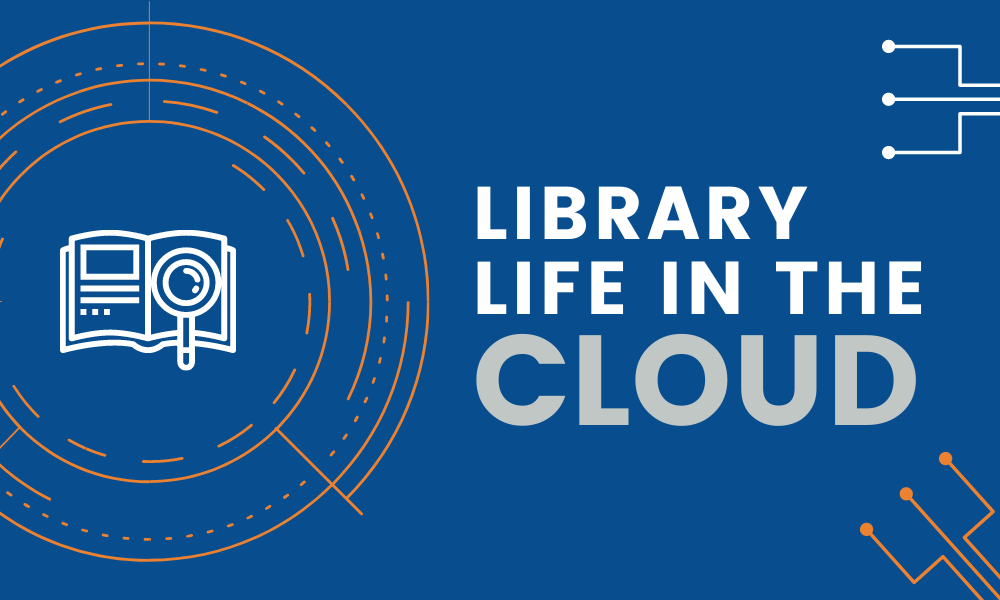What do you call a librarian who researches both the north and south poles?
Bi-polar, of course!
And our own Sue Olmsted is one of those bi-polar librarians.
Sue is a special collections conservator working remotely—not as remote as the polar stations of McMurdo, Amundsen–Scott or Palmer, but from her home in North Carolina, miles away from the National Science Foundation’s offices in Virginia.
Supporting NSF Publications
Sue had worked for the NSF for nine years before retiring in 2014. She is back, only this time under a flexible work arrangement as a contractor and employee of LAC Federal, currently on assignment at the Foundation. And her new role is one she feels passionate about. According to Sue,
“My role of Special Collections Coordinator will be to work with NSF Publications, and also to collaborate in a digitization project of the Antarctic Bibliography microfiche collection. This collection is a compilation of pre-internet literature about Antarctic and some Arctic research, produced worldwide during the first half of the 20th century. The material was microfilmed in the mid-1990s by the Library of Congress.”
With today’s improved communications and digital technology, those polar stations no longer need microfilm. It’s Sue’s responsibility to relocate this data in suitable locations within the U.S. and internationally, for preservation and safety.
Preserving early polar research data
The collection includes content dating back to the start of the 20th century, including:
- Books of Sir Ernest Henry Shackleton, the British explorer during a period known as the “Heroic Age of Antarctic Exploration” in the early 1900s.
- Logs, diaries, books and other documents of polar scientists, explorers and researchers from around the world, including works in Russian, Swedish, Danish, French and other languages.
- Data mostly from the Antarctic, tracked and reported on paper, long before the digital era.
This information is the type often referred to as “gray” literature, because it’s not easily accessible—in this case, much of the collection is on microfiche, the microfilm format on which it was recorded. In effect, this content remains locked away, which is why Sue is doing her best to collaborate with other organizations, to reduce the scanning burden for digital access.
Sue says,
“We hopefully will collaborate to plan and carry out the digitization of select, non-copyrighted items on the microfiche to make them accessible to the public and researchers worldwide.”
Some of the books could be available online at the Hathi Trust digital library. Some of the CRREL reports (Cold Regions Research and Engineering Laboratory) may be available digitally via the US Army Corps of Engineers ERDC Library. One of the microfiche sets was provided to the American Geophysical Union (AGU) to create a digital database. The NSF wants to create its own digital database to make as much of the information as possible available for free.
About microfilm
For those not familiar with microfilm or microforms, it’s the compression of images to a very small size, which requires much less storage space in libraries and archives. Microfiche is a type of microfilm, consisting of a cut thin sheet, usually four by five inches in size. Microfilming was used not only to save space, but to preserve fragile materials for archiving, store large volumes of documents for records management and other purposes.
Finding proper homes for preservation and digitization
Sue is working to find homes for the sets returned from the Antarctic stations. As a professional archivist, one of her objectives is to have sufficient geographic separation. She has a commitment from the University of Alaska in Anchorage to accept one, under the auspices of the Alaska Resources Library, a publicly-accessible e-library.
She is also looking for facilities with a commitment to not only preserve these materials, but to help make them accessible to today’s community of polar researchers. What’s happening in the Arctic and Antarctic regions is an interest and priority around the globe, for glacier movement and erosion, climate change, wildlife populations, fish populations and more. Current data and events are most relevant when measured against historical data and events.
Member of the Polar Libraries Colloquy
Sue Olmstead views her work to preserve that historical data as an important part of her legacy, and she’s in good company. A group of conservators and librarians involved in this work have united to form the Polar Libraries Colloquy. According to the group’s website:
“The Colloquy provides an international forum through which librarians and others concerned with the collection, preservation, and dissemination of information dealing with the Arctic and Antarctic regions, discuss issues of mutual interest and promote initiatives leading to improved collections and services.”
The Colloquy’s next meeting will be in Finland, June 10-16, 2018. Sue will be there, attending at her own expense and on her own time, not only for personal reasons but to discuss the Antarctic Bibliography project. Sue’s passion for this project is also inspired by the work of Guy Guthridge. Guy was a science communicator at the National Science Foundation’s Office of Polar Programs from 1970 to 2005 who was responsible for the funding and management of the Antarctic Bibliography. He also developed the Antarctic Artists and Writers Program, the model for arts and letters participation in Antarctic science programs.
More about Sue’s librarianship career
Like many professionals, the path between Sue Olmsted’s early career plans and current career took a number of detours and stops. She was a pre-med student as an undergraduate; however, the dean of the medical school she wanted to attend told her he would not accept a female medical student, because she would get married and become a mother, which would become her priorities. This was an acceptable position in the early 1970s.
Sue took a job in a medical library instead and earned an advanced degree, not in medical science but in library science, receiving a Master’s degree from the University of Wisconsin in Milwaukee. (In defense of UW, that was not where she applied to medical school.)
As for other formal training, Sue says,
“I completed the archival portion of a Public History degree at North Carolina State University, but once I got my own branch library to build and manage, not to mention parenting responsibilities, I didn’t complete a second degree.”
Her work experience encompasses medical, academic and public library settings, including:
- Reference librarian at the Wake County Library system in Raleigh, North Carolina, the state’s busiest library.
- Manager of the Olivia Rainey Local History Library, also part of the Wake County library system and one of the few libraries of its kind, dedicated to local history and genealogy.
- Systems Librarian and then Cataloger at the Library of the Marine Corps University in Quantico, Virginia.
- Reference librarian at the National Science Foundation and full-time NSF employee prior to retiring, joining LAC Federal and returning to NSF as a part-time contractor.
We are happy to be part of Sue’s journey by supporting her desire for flexible, remote work.
Most importantly, we are happy to support her unique contributions as a polar librarian and archivist of Arctic and Antarctic scientific exploration history.



